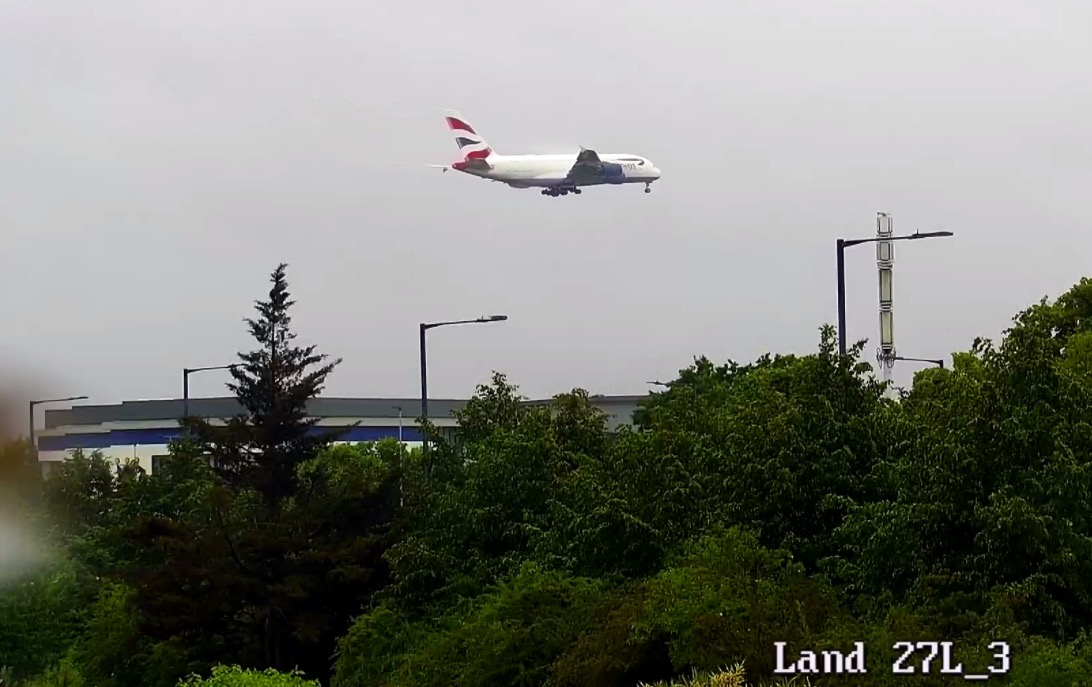British Airways Emergency Flight BA286: A Detailed Overview of the Incident and Its Impact
Introduction
When news of British Airways Emergency Flight BA286 broke, it caught global attention. The incident highlighted the critical importance of aviation safety, emergency preparedness, and how airlines respond under pressure. British Airways, one of the world’s most reputable airlines, handled the situation with professionalism, ensuring passenger safety above all else.
In this article, we’ll dive deep into what happened with flight BA286, the reasons behind the emergency, how the crew and airline responded, and what lessons were learned from the event. Whether you’re an aviation enthusiast, a frequent flyer, or simply curious about how airlines manage emergencies, this detailed breakdown will help you understand it all.
What Happened on British Airways Flight BA286?
British Airways Flight BA286 was operating its usual long-haul route from San Francisco International Airport (SFO) to London Heathrow (LHR) when it faced an unexpected technical issue mid-flight.
The Route and Background
- Flight Number: BA286
- Aircraft Type: Boeing 787 Dreamliner
- Route: San Francisco → London Heathrow
- Airline: British Airways
The aircraft took off as scheduled, but during the flight, an onboard system warning led to an emergency declaration. The pilots, following strict aviation safety protocols, decided to divert the aircraft to ensure passenger safety.
The Cause Behind the Emergency Declaration
While details vary across reports, the core issue appeared to be related to technical malfunctions in the aircraft’s engine monitoring system. This is not uncommon in modern aviation — aircraft systems are designed to detect even the smallest anomalies and alert the crew in real time.
Common Causes of In-Flight Emergencies
- Engine performance irregularities
- Cabin pressure fluctuations
- Hydraulic or electrical system issues
- Medical emergencies involving passengers
- Unusual weather conditions or turbulence
In the case of BA286, early reports suggest that it was a precautionary measure, not a catastrophic failure. This shows the effectiveness of safety protocols in preventing minor problems from becoming major incidents.
Crew Response and Emergency Procedures
British Airways is known for its rigorous crew training and emergency preparedness. When the issue was detected, the cockpit crew acted immediately:
- Assessment of Systems: The pilots evaluated the warning indicators and confirmed the nature of the issue.
- Communication: The flight deck contacted air traffic control (ATC) and declared an emergency (Mayday or Pan-Pan, depending on severity).
- Diversion Plan: The flight was rerouted to the nearest suitable airport for inspection.
- Passenger Communication: The cabin crew kept passengers calm and informed throughout.
- Landing and Inspection: The aircraft landed safely without injury or damage.
This calm and efficient handling demonstrates British Airways’ commitment to safety and professionalism.
Passenger Experience During the Emergency
Several passengers shared their experiences later, expressing appreciation for the crew’s composure. While anxiety is natural in such moments, the transparent communication and visible control by the cabin crew helped maintain calm.
H3: Key Passenger Observations
- Crew maintained regular communication and updates.
- There was no panic inside the cabin.
- Landing was smooth and uneventful.
- Passengers were offered accommodation and rebooking options afterward.
This reflects the airline’s strong customer care and emergency management system.
British Airways’ Official Response
After the incident, British Airways released an official statement confirming that the safety of passengers and crew was never compromised. The aircraft was thoroughly inspected by engineers upon landing and was cleared for future flights after all safety checks were completed.
The airline’s transparent approach reinforced public trust and demonstrated compliance with international aviation safety standards (EASA, FAA, and ICAO regulations).
Aviation Safety Protocols – Why Emergencies Are Rare
Modern aviation is incredibly safe. Statistically, flying remains one of the safest modes of transportation.
Layers of Aviation Safety
- Pre-Flight Maintenance Checks: Aircraft undergo rigorous inspections before each flight.
- Pilot Training: Pilots practice emergency scenarios in simulators.
- ATC Support: Air traffic controllers guide aircraft during diversions.
- Redundant Systems: Most aircraft have backup systems for every critical component.
British Airways’ handling of Flight BA286 is a textbook example of how these layers work seamlessly to protect lives.
Lessons Learned from British Airways Flight BA286
Every aviation incident, no matter how minor, provides valuable lessons for the industry.
Key Takeaways:
- Importance of Routine Checks: Constant system monitoring prevents disasters.
- Crew Training: A well-trained crew can make the difference between panic and precision.
- Passenger Communication: Calm and clarity minimize fear.
- System Redundancy: Backup systems ensure safe outcomes.
- Transparency: Open communication strengthens brand trust.
British Airways continues to refine its safety procedures based on such experiences.
The Role of Technology in Preventing Future Incidents
Aviation technology today integrates AI-driven monitoring systems, predictive maintenance, and real-time data sharing between aircraft and ground teams.
How Technology Enhances Safety
- Predictive Maintenance: Detects potential issues before they happen.
- Data Analytics: Tracks patterns of wear and tear.
- Cloud Connectivity: Allows engineers to receive live updates during flight.
- AI Alerts: Analyze system behavior instantly.
These advancements reduce the likelihood of emergencies like that faced by Flight BA286.
British Airways’ Commitment to Safety and Innovation
British Airways invests heavily in innovation, training, and technology to maintain its position as a world leader in safety. The airline collaborates with Boeing, Airbus, and aviation safety regulators to ensure best practices are implemented across all operations.
British Airways Safety Highlights
- Fleet equipped with next-gen avionics
- Regular simulator training for pilots
- Stringent maintenance and safety audits
- 24/7 global operations monitoring center
FAQs About British Airways Emergency Flight BA286
Q1: What was the main issue with British Airways Flight BA286?
The emergency was triggered by a technical alert during the flight. The crew followed safety protocols and diverted as a precautionary measure.
Q2: Were there any injuries or casualties?
No injuries or casualties were reported. All passengers and crew landed safely.
Q3: How often do such aviation emergencies happen?
Minor emergencies or diversions happen occasionally, but serious incidents are extremely rare due to advanced technology and strict regulations.
Q4: What happens after an emergency landing?
After landing, engineers inspect the aircraft thoroughly. The airline provides passengers with assistance, rebooking, and accommodations if needed.
Q5: Is it safe to fly with British Airways after this incident?
Absolutely. British Airways maintains one of the best safety records in the industry and adheres to international aviation standards.
Conclusion
The story of British Airways Emergency Flight BA286 is a powerful reminder of how preparation, professionalism, and technology come together to ensure passenger safety. The incident, though concerning at first, turned into an example of how modern aviation effectively manages unexpected challenges.
British Airways’ quick response, strong communication, and transparency reaffirmed its commitment to safety and customer trust. For passengers, it reinforces confidence that — even in emergencies — the systems, people, and processes in aviation work exactly as they’re designed to.
If you’re someone who travels frequently, remember this: every safe landing is a product of decades of safety innovation, dedicated professionals, and continuous improvement. British Airways Flight BA286 is proof of that legacy.





Post Comment